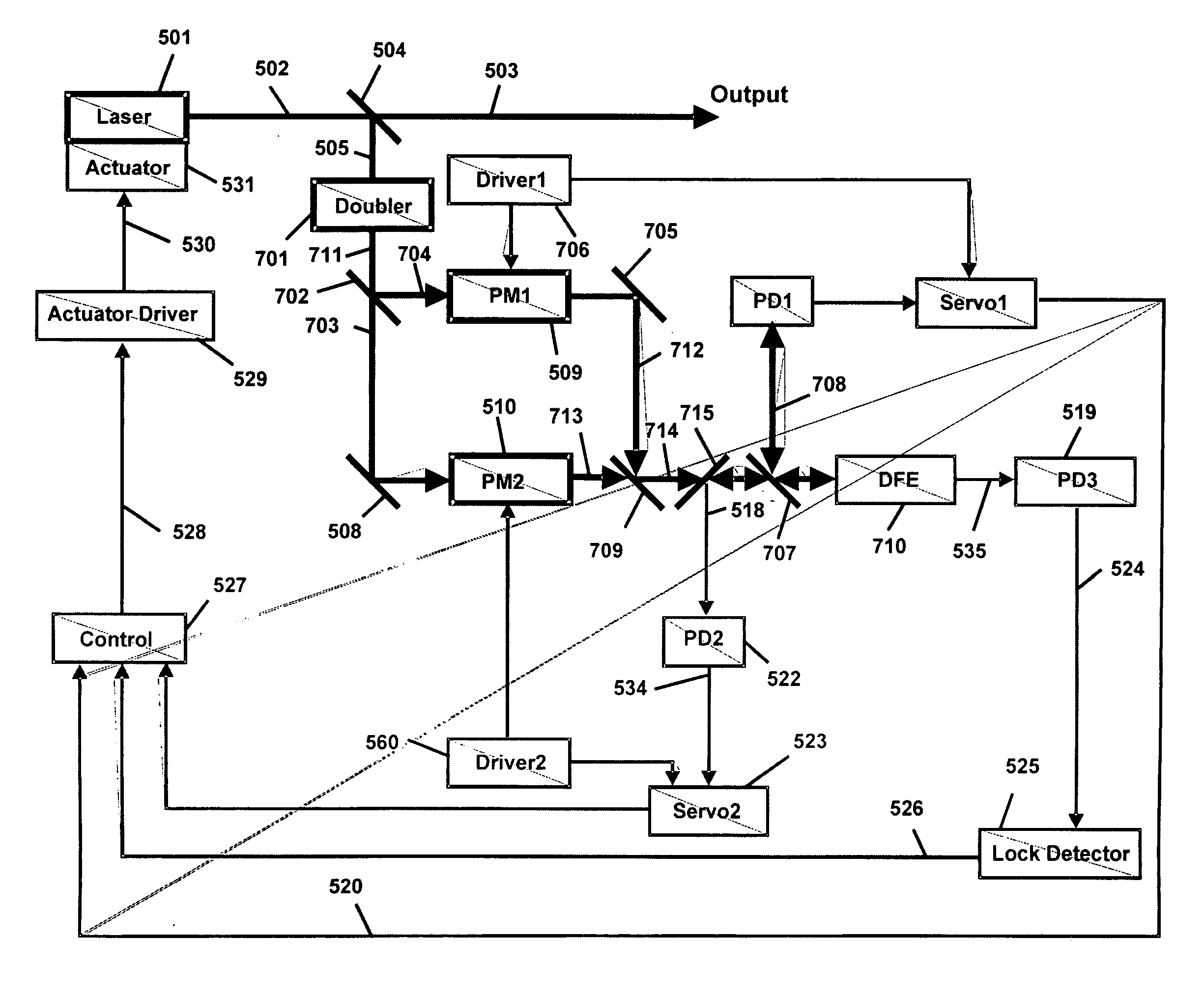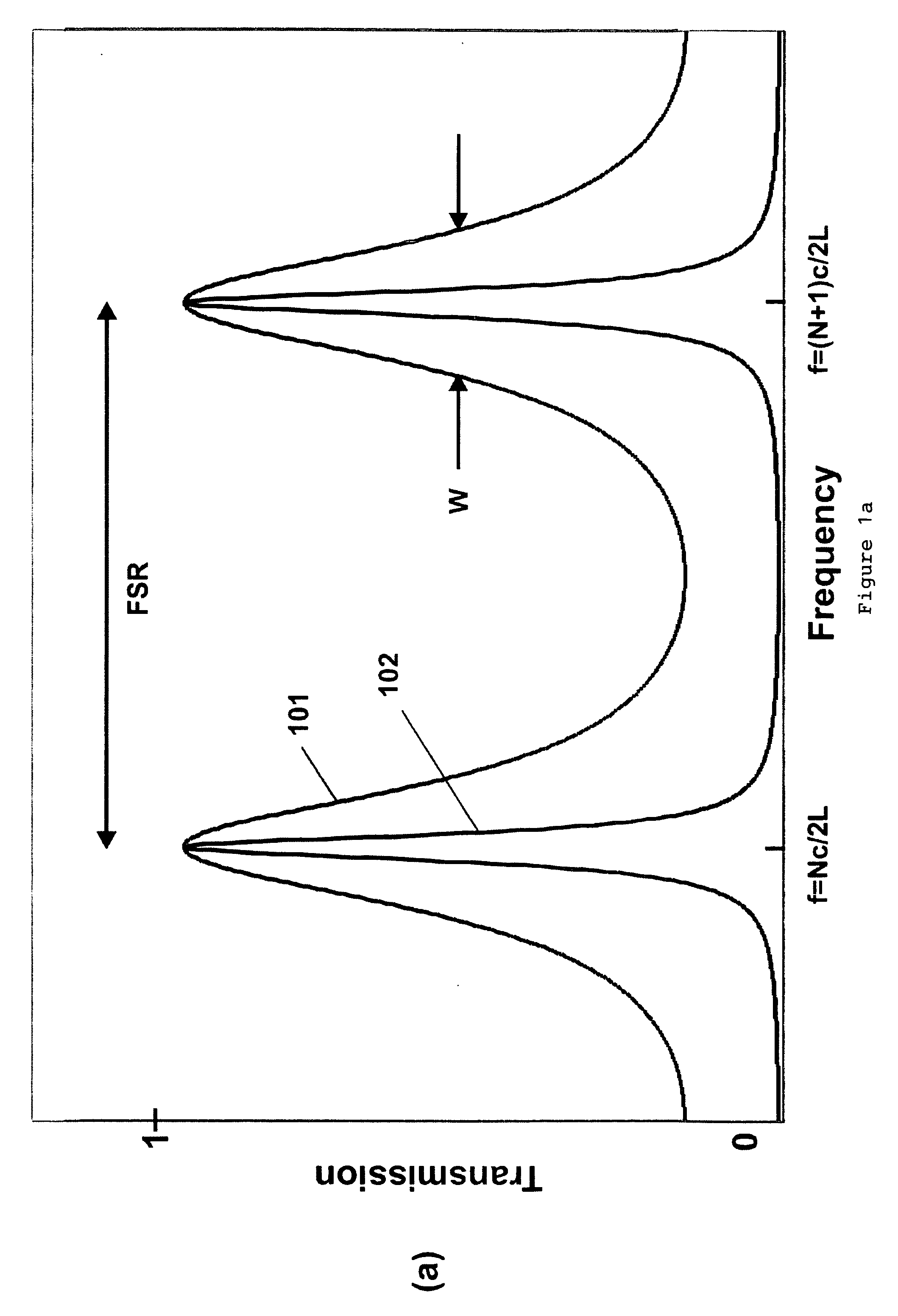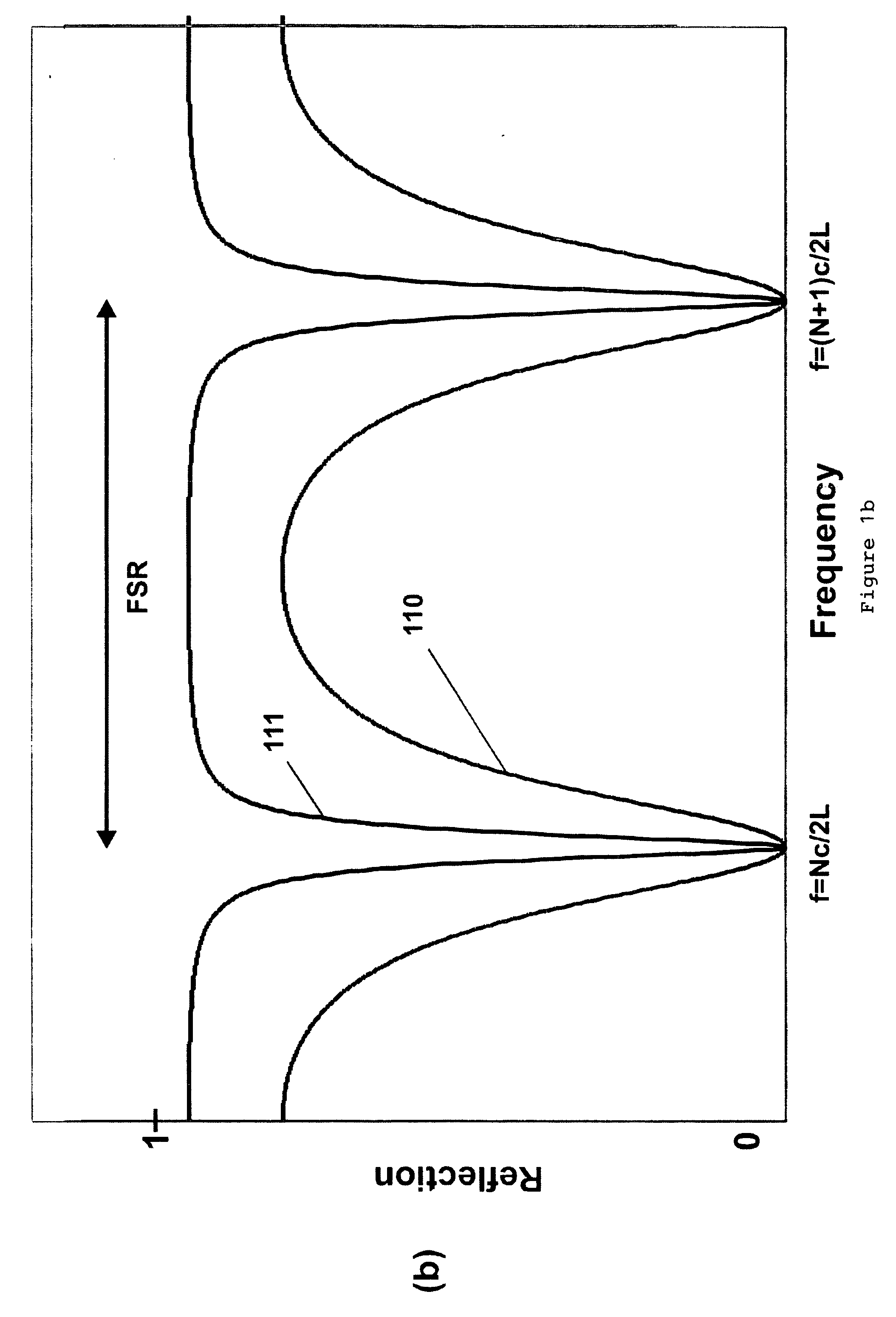Apparatus and method for stabilizing lasers using dual etalons
a laser and etalon technology, applied in the field of frequency stabilizing lasers, can solve the problems of invalid phase measurements, unsuitable harsh environments, and other problems, and achieve the effect of high finesse etalon, fast reestablish narrow bandwidth lock, and high finesse etalon
- Summary
- Abstract
- Description
- Claims
- Application Information
AI Technical Summary
Benefits of technology
Problems solved by technology
Method used
Image
Examples
Embodiment Construction
[0042] We now describe the invention with reference to the attached figures. To aid in understanding we begin with a discussion of frequency locking in the context of prior art and the use of etalons. Refer to FIGS. 1a, 1b, 2, and 3 (all prior art). A simple etalon (not shown) generally comprises two mirrors with reflectivity R placed with a spacing L apart and with the reflective surfaces perpendicular to an incident laser beam. In this configuration the etalon transmits and reflects light at various frequencies as illustrated in FIG. 1a. Any such etalon shows a transmission spectrum that is periodic with a period equal to the free spectral range (FSR) given by the expression FSR=c / 2L. The order of the etalon is an integer multiple N of the FSR as indicated. Curve 101 shows the transmission spectrum for an etalon having a relatively low finesse F, while curve 102 shows the transmission spectrum for an etalon having a higher finesse. We refer in the future to these types of etalons ...
PUM
 Login to View More
Login to View More Abstract
Description
Claims
Application Information
 Login to View More
Login to View More - R&D
- Intellectual Property
- Life Sciences
- Materials
- Tech Scout
- Unparalleled Data Quality
- Higher Quality Content
- 60% Fewer Hallucinations
Browse by: Latest US Patents, China's latest patents, Technical Efficacy Thesaurus, Application Domain, Technology Topic, Popular Technical Reports.
© 2025 PatSnap. All rights reserved.Legal|Privacy policy|Modern Slavery Act Transparency Statement|Sitemap|About US| Contact US: help@patsnap.com



